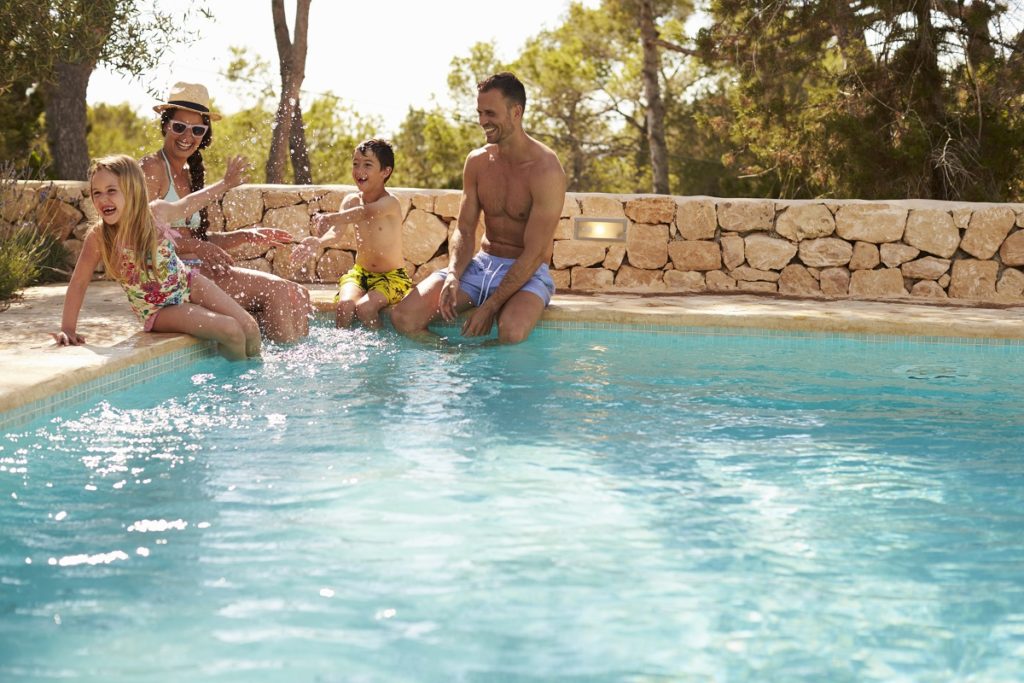According to data from the National Oceanic and Atmospheric Administration (NOAA), almost half or 43 percent of the United States is still in a drought this summer, mostly in the West. The worst category of drought—exceptional drought or D4—is now happening in California, the Southwest, and a part of central North Dakota. Experts are expecting this to widen to the Pacific Northwest and the northern Rockies.
NOAA predicts higher than average summer temperatures for most of the contiguous U.S. It expects the Northeast and the Great Basin to have temperatures that are 50 to 60 percent above the monthly average.
On the other hand, experts predict that temperatures will be lower than average in a smaller portion of the country including southern Mississippi, Louisiana, Texas, and Oklahoma because of the cooling effect of previous heavy spring rains. The western Gulf Coast will likely have 60 to 70 percent more rain than the average month, stretching from Texas to the entire Southeast and toward southern Pennsylvania and New Jersey.
Prepare for Indoor Heat
In hot areas of the country, households must prepare to counter indoor heat. When the temperature is just warm, the household can use a combination of exhaust fans and electric fans throughout the house. The electric fans ensure the continuous circulation of air and the exhaust fans located near the ceiling will take the hot air out of the house.
When the heat is extreme, such as in the 90s in Fahrenheit, air conditioning will be necessary. Households must, therefore, ensure that units are properly maintained to prevent breakdowns. Scheduled visits from a service provider will ensure timely repairs or replacements of parts.
Households must also prepare for possible power outages in summer. Having a generator on standby can be a lifesaver especially if there are vulnerable people in the household. This can also prevent spoilage of food and medicines in the refrigerator and freezer.
It will be beneficial to add other measures to keep out heat from the house. These will help reduce the workload of electric fans and air conditioners. Households can paint the roof white and preferably with heat-reflecting roof paint. They can replace window glass with a low-emissivity glass or line these with heat-reflecting film. They can use treated drapes, blinds, shades, and other window coverings that reflect heat, as well.
Greenery can also shield the house from the sun. A combination of trees and trellises of climbing plants placed where the sunlight is harshest will filter rays and cool down the property.
Outdoor Summer Preparations

On days when the weather is pleasantly balmy, households can enjoy gathering in the backyard perhaps for a barbecue or to play games. The presence of common summer pests like mosquitoes, flies, ants, and other pests can mar these gatherings, though. Such pests are not only annoying but can also be carriers of disease.
It is important to eliminate any areas of stagnant water around the house because these are where mosquitoes lay their eggs. Homeowners must seal rainwater catchment systems, and ensure that any containers that can collect rainwater are promptly emptied.
Households must not allow grass to grow tall and must immediately clear any cut branches and brush after pruning or trimming greenery. This will minimize areas for mosquitoes, fleas, and ticks to stay in.
Building a birdhouse, a birdbath, and regularly leaving seeds for birds will attract them to the yard. Birds feed on ants, aphids, and moths and provide musical and visual entertainment, as well.
Best of all, households can hire an extermination service for mosquitoes and other pests to ensure a more thorough and regular clean-up. They must check that the service uses solutions that are safe for humans and pets.
Danger from Heat
Whether outdoors or indoors, households must never take heat for granted. According to the Centers for Disease Control and Prevention (CDC), heat causes over 600 fatalities every year in the U.S. Hot weather can cause sunburn, heat rash, heat exhaustion, heat cramps, and heatstroke. The most vulnerable are elderly people, infants and young children, and people with chronic diseases, mental illness, and obesity.
The most dangerous among these is heatstroke which can be fatal. Warning signs are body temperature of 103°F or higher, a fast strong pulse, and skin that is either red, hot, and dry, or damp. The victim can experience headache, dizziness, nausea, and confusion, and can pass out. Companions must immediately call 911 and move the victim to a cooler place. They must lower the victim’s temperature with a cool bath or a wipe down with a cool wet cloth. The victim must not be given any drink. Heat exhaustion and heat cramps that do not go away after an hour also need medical attention.
Preparation and Prevention
To be able to enjoy the summer months, households must prepare for heat-related scenarios and prevent exposure to risks. It is not too late to start on these tasks now and much danger can still be avoided.





